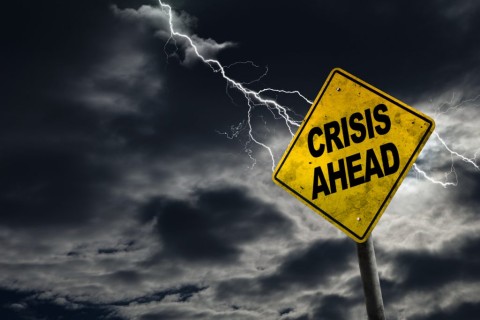Financial crisis. Check. Environmental catastrophes. Check. What’s next? Is this the year of political disruption?
Working in supply chain is like starring in a Rocky movie. You keep getting knocked down and you have to keep getting back up. You don’t need to go back any further than a decade to understand the many challenges supply chains have endured over the years. Interestingly enough, the first episode of Breaking Bad that aired in 2008 reflected what it was like being in supply chain risk management at the time: “Hey, a science teacher is cooking meth, how much worse could it get?” If you were a fan of the series, you were on the edge of your seat amazed at the plot’s crazy twists and turns. My guess is people who didn’t see the show were the supply chain practitioners too busy trying to ride the storm of the 2008 financial crash. Supply chains had to deal with squeezing margins and dramatically cut costs, which included significant downsizing. Doing more with less wasn’t an option; it was a necessity. Maybe the one good thing to come out of it was some companies figured out how they could survive with lower inventories. Some suppliers weren’t so lucky. In 2009, I’m sure most we’re thinking, “How much worse could it get?” Well, it got a lot worse. The 2010 volcanic eruption in Iceland. The 2011 Tōhoku Earthquake and Tsunami. Yes, there have been natural disasters before. But these specific disruptions not only resulted in significant human and personal loss, but also had a major impact on supply chains. For example, travel was halted all together as a result of the 2010 Eyjafjallajökull volcano. Inventories were stranded as supply chains scrambled to understand the impact on their customers. While there may have been an uptick in video conferencing from executives stuck in airports and others eager to catch up on Breaking Bad episodes, supply chains would take weeks, if not longer, to recover. There were many lessons learned from these unexpected global events and, although we don’t know when the unexpected will happen, supply chains are now generally better prepared for unplanned events. So, it couldn’t get any worse, could it? Is the global political landscape the next unknown? Take Brexit as an example. There are so many questions still left unanswered: What will the impact be on supply chains when goods do not move as freely as before? Will the pound take a hit causing a strain on suppliers and imports? What will the impact be on the UK if they are no longer part of current free trade agreements? To avoid the risk of becoming political and losing the focus on supply chain, there’s only one other question to ask: Where else in the world is there political uncertainty? When you answer that question, you can look at it through the supply chain lens. Like our science teacher turned meth cooker in Breaking Bad, the real enemy for supply chain risk management is uncertainty. The political landscape of today sure would make for a great mini-series, but the folks in supply chain likely wouldn’t have time to watch. Rather, they would be too busy keeping their networks as agile as possible so they are prepared for the uncertainly of the future. What do you think the next big risk to supply chain will be? Please let us know in the comments section below. I’m sure we’ll all benefit from our collective insights.





Discussions
2. Water Wars
3. Rise in unemployment due to Artificial Intelligence leading to riots
Leave a Reply